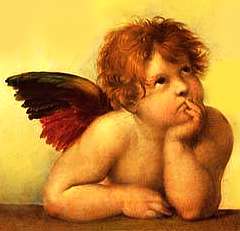Art is driven by ruptures. And if there is one name that embodies the radical break at the end of the 16th century, it is Michelangelo Merisi da Caravaggio. Forget the idealized perfection of the Renaissance; with him, art looks directly at the street, the tavern, and raw humanity. His genius lies not only in technique but in his vision: he painted saints, apostles, and martyrs with the faces and bodies of common people, bathed in a dramatic light that would become his signature: tenebrism.
Five transcendental works by Caravaggio are undoubtedly “The Calling of St Matthew,” “The Crucifixion of St Peter,” “The Supper at Emmaus,” “David with the Head of Goliath,” and “The Conversion of St Paul.” These paintings are considered pivotal for their innovation in the use of chiaroscuro, their dramatic realism, and the way they represent the sacred and the human.
Tenebrism: When Shadow Becomes the Protagonist
To understand Caravaggio, one must understand light. He pushed chiaroscuro (the use of light and shadow) to an extreme called tenebrism (literally, painting in darkness). In his works, the backgrounds are almost always black or such a deep brown that they seem to absorb all the light in the universe. The light itself is neither natural nor soft; it is a powerful beam that enters from a single, dramatic point, like a theatrical spotlight.
This technique served two crucial purposes:
- Dramatic Focus: It isolates the main action from any distraction, forcing the viewer's eye to concentrate on the character's psychological or physical moment.
- Spiritual Drama: The light becomes a symbol of the divine, the ray of grace or revelation breaking into the darkness of human existence.
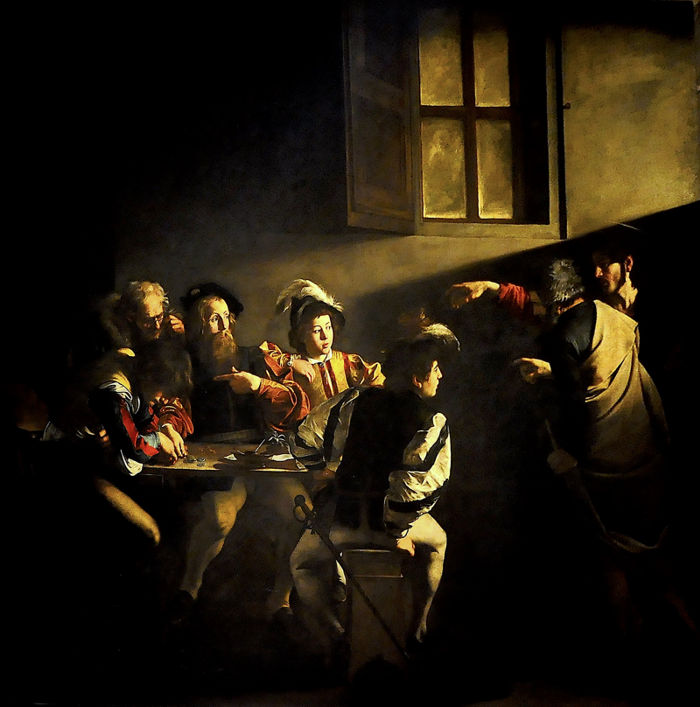
1. The Calling of St Matthew (1599-1600)
This work, commissioned for the Contarelli Chapel in the church of San Luigi dei Francesi in Rome, is perhaps the clearest manifesto of Caravaggio's revolution and a lesson in how to stop time.
The artist does something audacious: he moves the divine calling of Jesus to a dark room that resembles a tavern or a tax office. Far from solemnity, the scene is filled with men in clothing contemporary to the painter. Jesus and St. Peter (barely visible in the shadow on the right) burst into this environment. The real protagonist here is the light, which enters dramatically from the right, not from an obvious source, but like a spotlight illuminating the faces of the men at the table. The climax is the gesture of Christ's hand, charged with urgency and power. Caravaggio captures the exact moment when Matthew, the tax collector, points to himself, as if asking, "Are you calling me?", as his worldly life is halted by grace. It is light breaking into darkness, both literally and spiritually.
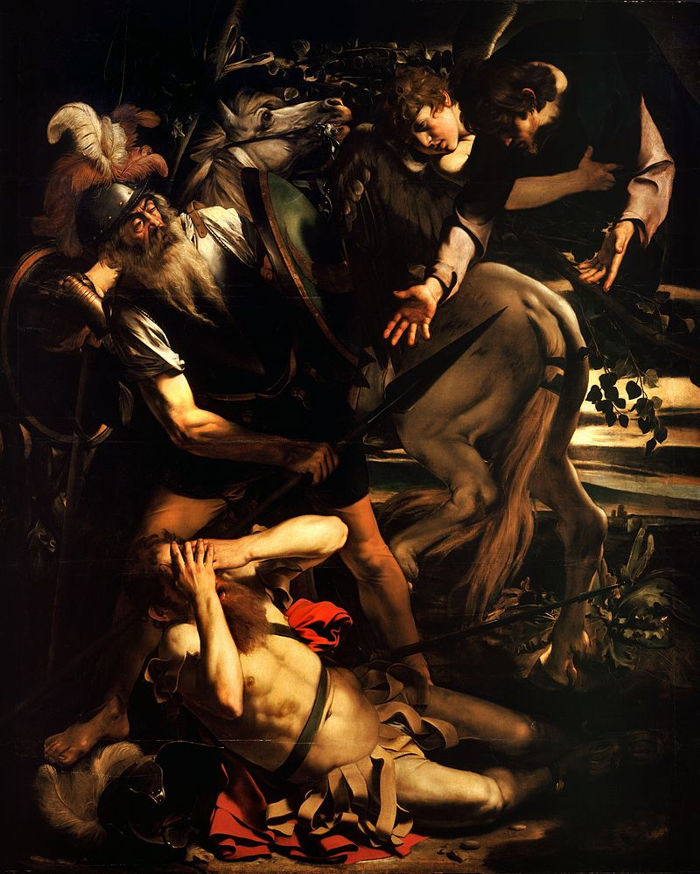
2. The Conversion of St Paul (1600-1601)
This work, created for the Cerasi Chapel, alongside "The Crucifixion of St Peter," represents a bold twist on the iconography of miracles.
Instead of painting a grandiose celestial event, full of angels and clouds, Caravaggio offers us an intimate and earthly vision of Saul's conversion. The miracle happens on the ground, among the hay. Saul falls from his horse with his arms extended in a pose of absolute vulnerability and shock. The light is not divine in the traditional sense, but an intense ray concentrated almost exclusively on Paul’s fallen body. The figure of the horse dominates the scene in the foreground, with its vastness and rear almost touching the viewer, while the servant remains oblivious to the revelation. It is a simple, raw, and immediate composition that reduces the great miracle to an experience of personal and physical crisis, so real that we can almost smell the stable.
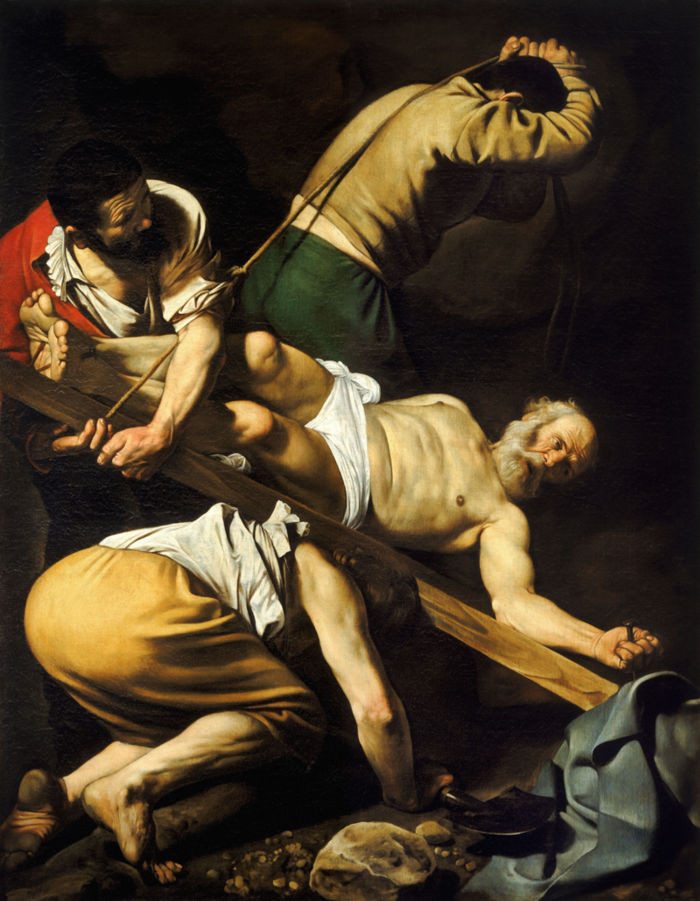
3. The Crucifixion of St Peter (1600-1601)
Also created for the Cerasi Chapel, this painting is a frontal assault on the idealism and perfection that art had sought for centuries.
Here, the martyrdom of St. Peter is represented with a physical rawness never before seen. The realism is dirty and violent. The executioners are not mythological heroes; they are common men with tense necks, strong legs, and faces strained by the effort of lifting the heavy cross. Caravaggio makes the viewer feel the weight of the wood and the muscular tension. The composition is incredibly dynamic, with the cross being raised diagonally from below. The light highlights the rough texture of the wood and the dirt under the fingernails of Peter's feet, who accepted to die upside down, deeming himself unworthy to be crucified like Christ. Tenebrism, by engulfing the background, leaves us alone with the effort and the saint's acceptance.
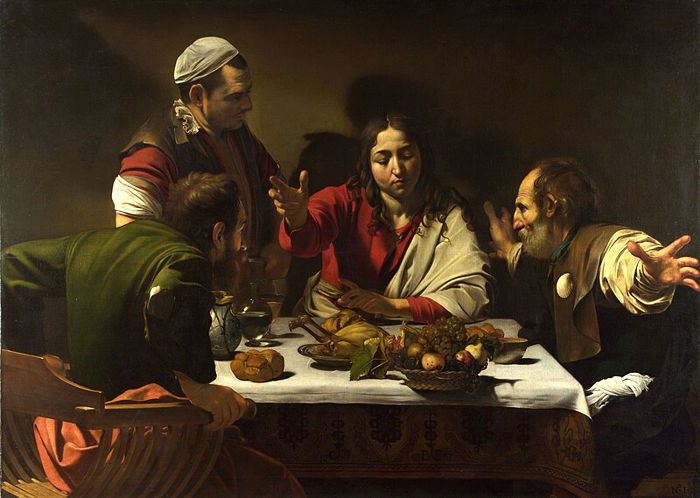
4. The Supper at Emmaus (1601-1602)
In this early work (the London version), Caravaggio demonstrates his ability to fuse everyday life with the miraculous.
The captured moment is explosive: the resurrected Jesus reveals himself to two of his disciples in a humble inn. Caravaggio freezes the instant of the purest disbelief. The apostle on the left is about to rise, his arms outstretched in a gesture that breaks the picture plane, inviting the viewer to step back. The disciple on the right has jumped from his chair, stunned. It is the force of these gestures, brought to the foreground, that makes it transcendental. A focused light illuminates Christ’s youthful and almost androgynous face, as well as the details on the table, such as the basket of fruit that seems about to fall, intensifying the sensation that time has stopped. This miracle, thanks to Caravaggio, seems to occur at our own table and time.
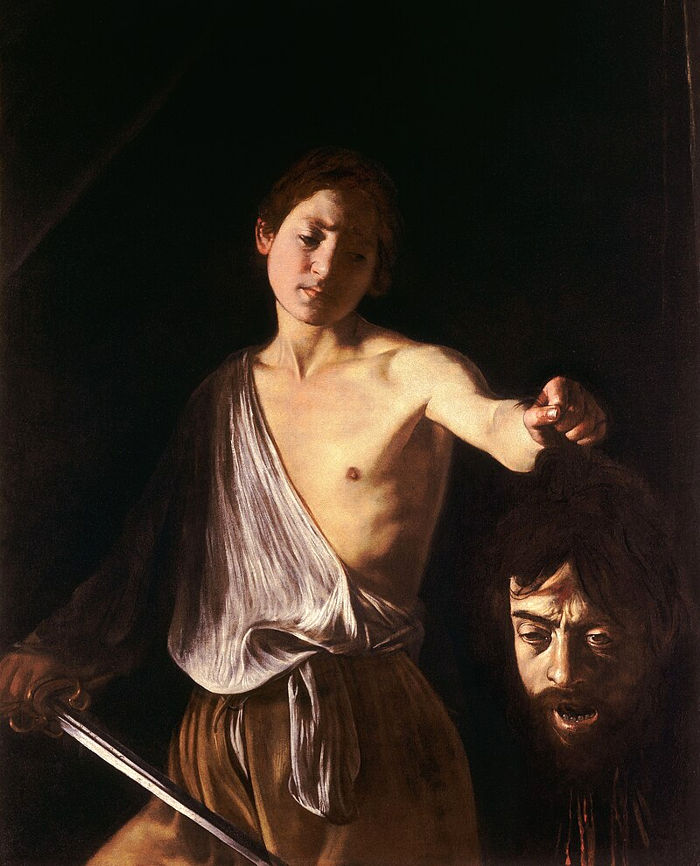
5. David with the Head of Goliath (1609-1610)
This work, created near the end of his turbulent life, is often considered Caravaggio's most personal, unsettling, and reflective painting.
Its transcendence lies in the subversion of the heroic theme. David is not a radiant victor; he is a melancholic youth who observes the severed head with an expression of pity and sadness. But the blood-chilling detail is that the head of Goliath is a heartbreaking self-portrait of Caravaggio in his last, tormented years: the defeated, exhausted, and condemned figure. David, in contrast, perhaps represents an idealized version of the younger painter. The work is not a celebration but a confession. Many historians believe Caravaggio sent this painting to an influential cardinal as a silent plea for forgiveness for the murder he had committed, symbolically offering his own head as penance. It is a doubly tragic work where the victory is somber and the portrait of the monster is the final plea of the genius.
The Inescapable Legacy of a Fugitive Genius
Caravaggio revolutionized painting by rejecting idealism and seeking truth, even if it was ugly or uncomfortable. His technique of bringing the drama into the foreground, bathed in a revealing light, influenced generations of artists, known as "Caravaggisti," from Orazio Gentileschi to Artemisia Gentileschi, and great Baroque figures like Ribera in Spain and Rubens in Flanders.
His life, marked by duels, flights, and constant risk from the law, ended prematurely in 1610, but his impact was inescapable. By giving the divine a human and earthly face, he made the biblical stories accessible, palpable, and intensely emotional for the common viewer. Caravaggio did not just paint pictures; he painted moments.



